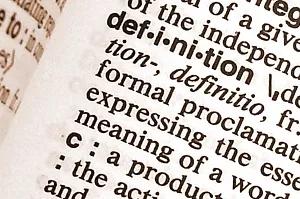What is Facilitation?
Facilitation is the act of engaging participants in creating, discovering, and applying learning insights. Facilitation is different from presentation, where one person talks to a group in a "sage on the stage" manner. Facilitation usually involves a “guide on the side” who asks questions, moderates discussions, introduces activities, and helps participants learn.
This necessary and evolving skill is particularly important for talent development professionals who conduct in-person or virtual training. However, many other professionals also use it to direct team projects, task forces, committees, and meetings of any type.
Facilitation is one of the 23 capabilities in ATD's Talent Development Capability Model. You can find more information in the Talent Development Body of Knowledge. ATD Members have access to a variety of useful tools- Learn More.
ATD's Handbook for Training and Talent Development outlines five tactics to help maintain learner engagement:
Define success ahead of time, so you can design activities to help learners achieve a specific goal.
Prepare relentlessly, including self-preparation, preparing the learning environment, and preparing the content. When moving from an in-person classroom to a virtual environment, follow these tips.
Start with impact so that learners are excited, empowered, and involved from the beginning.
Keep learners interested by using different activities like questions, role plays, and practice exercises. Let them share their experiences and learn from each other during the session.
Address problems when a student is unhappy with training. Whether intentional or not, lack of satisfaction can come from the overall goal, material, approach, or outside influences.
Within talent development, facilitation most often refers to a technique used during in-person or virtual classroom learning. However, people can also use similar techniques in meetings or other group settings. These techniques help a group improve how they work together, identify and solve problems, make decisions, and handle conflict.
The facilitator helps the group work better together by creating synergy, coming up with new ideas, and reaching agreements. You can hire a professional facilitator to assist with meetings. Sometimes, a senior leader, manager, consultant, coach, or another professional can also lead sessions. This person can be from inside or outside the organization.
Whether in a classroom or a meeting, effective instructors must focus on group dynamics and processes. They are ultimately accountable to the group and must earn the group’s trust.
What Are the Differences Between Facilitation, Presentation, and Training?
Trainers help others improve their performance by teaching, instructing, or aiding learning. As such, facilitation and presentation are both tools in a trainer’s toolkit. The best trainers spend more time guiding learning than lecturing. The role of the facilitator often reflects that of a trainer.
Presentation vs. Facilitation
Presentation | Facilitation |
Delivers information, usually through a lecture. | Enhances learning for everyone, usually through discussion or activities such as role plays. |
The expert sharing their knowledge of the subject matter. | Provides opportunities for members of the group to share knowledge and learn from one another. |
Spend most of the time talking. | Spends most of the time asking questions, encouraging others to speak, and answering learners’ questions during activities. |
Usually on a stage or at the front of the room. | Usually moving around the classroom to help address learners’ questions or monitor how activities are progressing. |
Facilitator Skills
Facilitators can come from any background and a variety of experience levels. They demonstrate the following skills:
Listening- listen actively and hear what every learner or team member is saying.
Questioning- be skilled in asking questions that are open ended and stimulate discussion.
Problem solving- be skilled at applying group problem-solving techniques, including:
defining the problem
determining the cause
considering a range of solutions
weighing the advantages and disadvantages of solutions
selecting the best solution
implementing the solution
evaluating the results.
Resolving conflict- recognize that conflict among group members is natural. As long as people express conflict politely, there is no need to suppress it. Expect and deal with conflict constructively.
Using a participative style- encourage all learners or team members to actively engage and contribute in meetings. This will vary depending on individual comfort levels. Create a safe and comfortable atmosphere in which group members are willing to share their feelings and opinions.
Accepting others- maintain an open mind and not criticize ideas and suggestions offered by learners or group members.
Empathizing- be able to “walk a mile in another’s shoes” to understand the learners’ or team members’ feelings.
Leading- keep the training or meeting focused toward achieving the outcome identified beforehand.
Preparing for a Facilitation
Facilitation is equal parts preparation and delivery. Ask yourself these questions to prepare for a session:
Environment- Where will the session take place? Virtual? In-person? Synchronous vs. Asynchronous? How will we set up the desk and chairs? Is the space easy to access?
Technology- What systems does your session require? A microphone? A clicker? Do you need tech support on stand-by? What virtual platform will you use?
Materials- Will you provide notes or learning guides? Will you have visual examples? Do you need to create a video for the session? Will you reference books or other reading excerpts?
Yourself- What is your role in the facilitation? What are your strategies for maintaining the right level of engagement? How will you fill your own knowledge gaps? Do you need to practice public speaking?
These are just a few of the questions to get facilitators started on preparation. There are many "what-ifs" that facilitators cannot prepare for ahead of time. For example, you cannot control if learners complete the pre-work. Focus on what is within your control.
These questions and other tips come from ATD's Facilitation in Action: Finding Your Authentic Training Style. Read more from ATD's Facilitator Team: Carrie Addington, Jared Douglas, Nikki O'Keeffe, and Darryl Wyles.
Common Facilitation Tools
A training program might use a combination of the following tools to guide learning for long term success:
Group Discussions- often useful for addressing skills gaps. Grouping people with different experiences allows an exchange of new ideas and fresh perspective.
Online Learning- can be an individual online course or group online training. This can be both synchronous or asynchronous.
Team Building Exercises- ideal for a small group. This technique helps grow an organization's culture and creating a comfortable space for learning.
Development Programs- learning done over a set period. This enhances the learning process by allowing space for memorization and recall.
How ATD Can Help You With Facilitation?
Since our founding in 1943, ATD has been dedicated to supporting talent development professionals in delivering impactful learning experiences. With a focus on facilitation, we provide tools and resources that empower trainers to engage learners effectively, apply facilitation best practices, and adapt to various learning environments.
We take a holistic view of talent development, understanding how facilitation ties into instructional design, evaluation, and continuous learning. As a leading organization, ATD defines the standards for facilitation and training delivery, ensuring that professionals can excel in creating meaningful, learner-centered experiences.
For access to even more resources, including practical tools and templates, research, and insights, you’re invited to become an ATD member. Learn more!

BLOGS
Training Delivery and Facilitation Topic Page
Explore training delivery and facilitation articles for all levels. Find strategies, insights, and best practices to elevate your expertise. Start here!

NEWSLETTER
Training Delivery and Facilitation Newsletter
Sign up for curated content about facilitation engaging learning experiences. Sign up today!

COURSES BY ROLE
Trainer / Facilitator
Still exploring options? ATD offers more train-the-trainer courses on a variety of specialized topics, including in-person and virtual training, and evaluating learning. Learn more!

EVENTS
ATD Events
Talent development professionals come together to give you conference experiences that are diverse in education, solutions, and opportunities. Learn more!

GLOSSARY TERMS
Talent Development Glossary Terms
Learn about essential terms and need-to-know expressions for training and development professionals. Explore now!
Free Facilitation E-Book
Effective facilitators also focus on the group dynamics and processes, and are accountable to the group; therefore, the facilitator must earn their trust.
